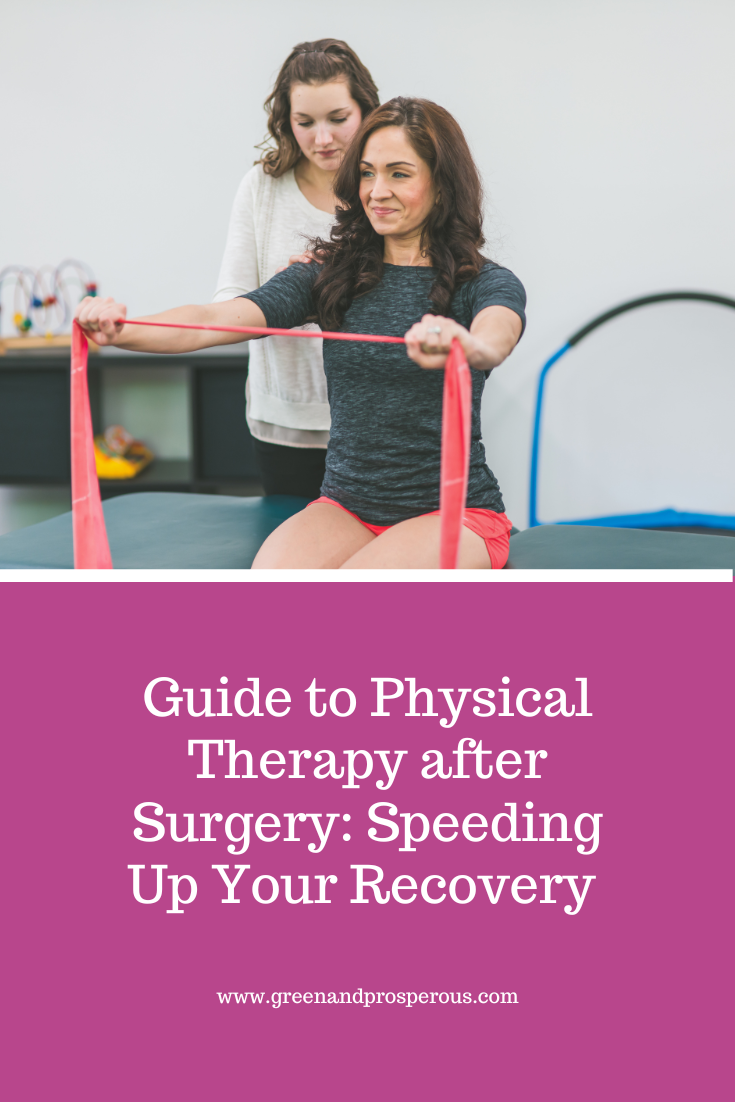Guide to Physical Therapy After Surgery: Speeding Up Your Recovery
/Recovering from surgery isn’t always easy. You might feel frustrated, impatient, or even worried about how long it will take to get back to normal. That’s where physical therapy comes in. Think of it as your personal guide to getting you moving again, feeling better, and speeding up your recovery in a safe, supported way.
Whether you’ve had knee surgery, a shoulder repair, or something else, physical therapy plays a huge role in helping you regain strength, reduce pain, and improve how you move.
In this guide, we’ll walk you through everything you need to know about what to expect, how to make the most of your therapy and tips for a smooth recovery.
Why Physical Therapy Is Important After Surgery
After surgery, it’s normal to feel stiff, weak, or limited in movement. That’s because your body is healing, and it needs some extra help to get back to full strength. Physical therapy is that extra help. It not only helps you heal faster but also prevents issues like scar tissue build-up, loss of flexibility, and further injuries down the road.
Imagine trying to recover without moving much, your muscles would weaken, and your joints might get stiffer. Physical therapy keeps everything moving, but in a way that’s gentle and safe. It’s like having a coach by your side, making sure you’re on the right track.
What to Expect During Physical Therapy Sessions
Walking into your first physical therapy session can feel a little intimidating, especially if you don’t know what to expect. But don’t worry, the process is designed to help, not hurt. Your therapist will start by assessing where you are in your recovery, checking your range of motion, and discussing your goals.
During each session, you’ll do exercises that help improve your flexibility, balance, and strength. These might include stretching, light movements, and, as you progress, more advanced exercises. Your therapist will also guide you through using certain equipment, like resistance bands or stationary bikes, to build up strength. Everything is paced to what your body can handle, so you never feel like you’re pushing too hard.
Top Exercises to Help You Recover Faster
Not all exercises are created equal, especially after surgery. Your physical therapist will customize exercises based on your surgery and recovery needs. Here are a few common types:
Range of Motion Exercises
Surgery can leave your joints feeling stiff and sore, making it hard to move without discomfort. Range of motion exercises are designed to gently stretch and move your joints, helping them loosen up over time. These exercises improve flexibility and make everyday activities, like bending your knees, lifting your arms, or turning your neck, easier and less painful. You might start with simple movements, like leg lifts or arm circles, and gradually progress to more dynamic stretches as you heal.
Example: If you’ve had knee surgery, a common range of motion exercise might include seated knee extensions, where you slowly straighten and bend your knee to regain movement.
Strength-Building Exercises
After surgery, muscles can weaken due to inactivity and the healing process. Strength-building exercises target these muscles to help you regain power and stability. Strengthening key muscle groups not only improves your ability to move but also supports the joints that might be vulnerable after surgery. These exercises may involve resistance bands, light weights, or your own body weight, depending on your recovery stage.
Example: If you’ve had shoulder surgery, exercises like wall push-ups or light dumbbell lifts can help rebuild shoulder strength and prevent future injury.
Balance and Coordination Exercises
Balance and coordination are often affected by surgery, especially if you’ve had work done on your legs, feet, or back. After surgery, your body may struggle with stability, increasing the risk of falls or other injuries. Balance and coordination exercises help you stay steady on your feet and regain confidence in your movement. These exercises often involve standing on one leg, walking heel-to-toe, or using balance boards to challenge your stability in a controlled, safe environment.
Example: For someone recovering from hip surgery, single-leg stands, or gentle side steps with a resistance band can help improve balance and coordination.
These exercises aren’t just for therapy sessions. You’ll likely be doing them at home. The more consistent you are, the quicker you’ll see results.
How Physical Therapy Speeds Up Recovery
Consistency in physical therapy after surgery helps speed up your recovery. But beyond that, it offers many other benefits:
Reduces Pain: Physical therapy can help manage pain by using techniques like targeted exercises, massage, or modalities such as heat, cold, or electrical stimulation.
Improves Mobility and Flexibility: Surgery often leaves the body stiff or immobile. Physical therapy focuses on restoring movement so you can bend, stretch, and use your body as you normally would.
Prevents Scar Tissue Build-Up: Without movement, scar tissue can form and restrict your motion. Regular therapy reduces the risk of this happening by encouraging proper tissue healing.
Helps You Regain Strength: Muscles tend to weaken after surgery, but therapy helps rebuild them safely through targeted exercises. This not only makes you stronger but also prevents further injury.
Prevents Re-Injury: A big part of physical therapy is teaching you how to move safely so you don’t hurt yourself again. Whether it’s teaching proper posture, lifting techniques, or daily movements, therapy is designed to protect your body from future harm.
Boosts Mental Health: Recovering from surgery can be emotionally challenging. Physical therapy provides a structured plan that not only helps physically but also offers a mental boost by showing clear progress and giving you a sense of accomplishment.
Overcoming the Challenges of Physical Therapy
Let’s be real, physical therapy isn’t always a walk in the park. There will be moments of discomfort, and you might feel frustrated with your progress. It’s normal to have tough days. But the key is to stay motivated and focus on the small victories—like being able to move a little more than the day before or feeling less stiff.
If you’re ever feeling overwhelmed by the pain or difficulty of an exercise, don’t hesitate to tell your therapist. They’re there to help and can adjust your plan to make it more comfortable for you.
Conclusion
Physical therapy is an essential part of healing journey after surgery. It’s not just about getting back on your feet. It is about building strength, improving your movement, and feeling like yourself again. By staying committed to your therapy and making healthy choices, you can speed up your recovery and regain control of your body.
like this? please pin!
Remember, recovery is a process. It might take time, but with physical therapy guiding you, you’ll be back to doing the things you love before you know it. Keep going. You’ve got this!
About the Author:
Jonna Lopez is an experienced blogger and Healthcare SEO specialist with a passion for crafting content that educates and empowers readers. When she's not optimizing websites, Jonna enjoys exploring the latest wellness trends and sharing insights that support better health for all.











































Recovering from surgery isn’t always easy. You might feel frustrated, impatient, or even worried about how long it will take to get back to normal. That’s where physical therapy comes in. Think of it as your personal guide to getting you moving again, feeling better, and speeding up your recovery in a safe, supported way.